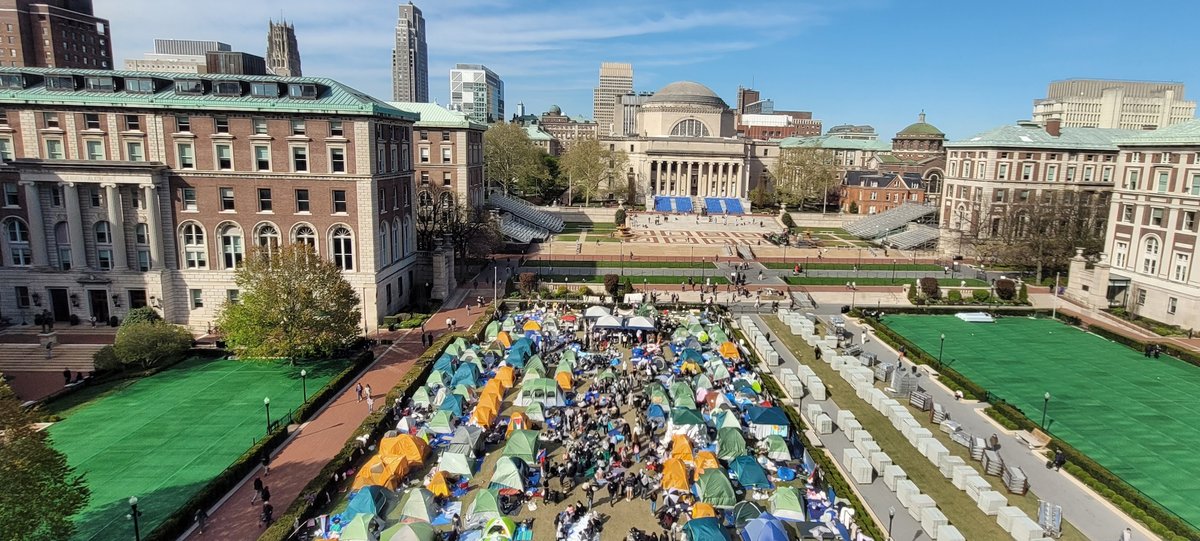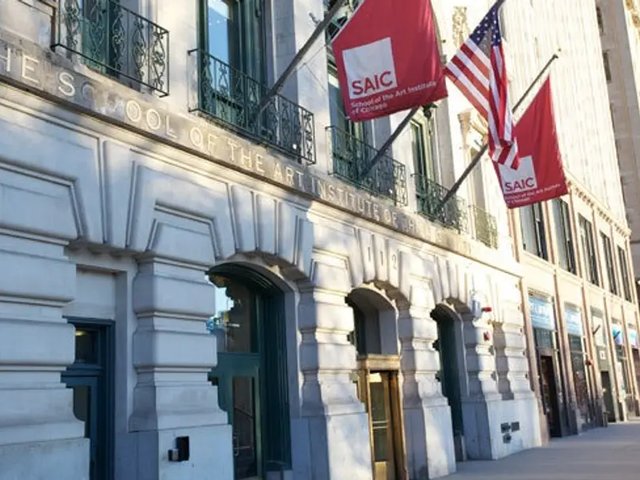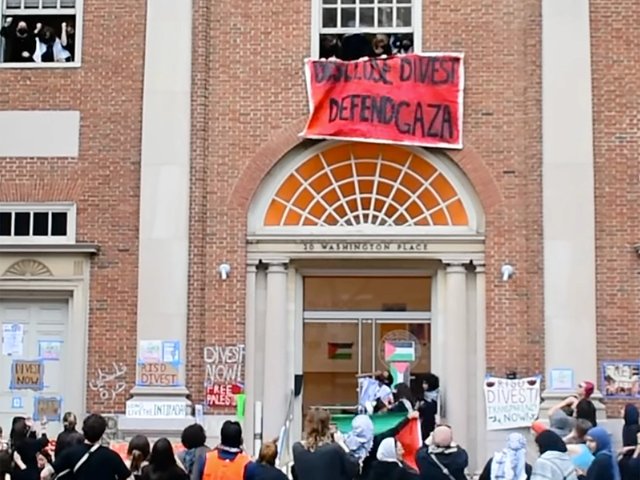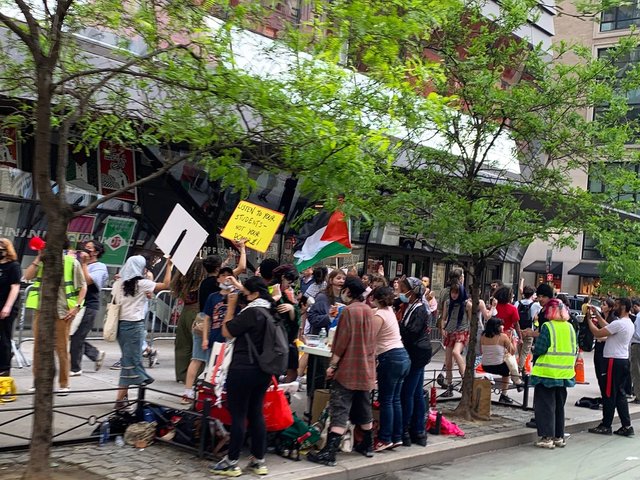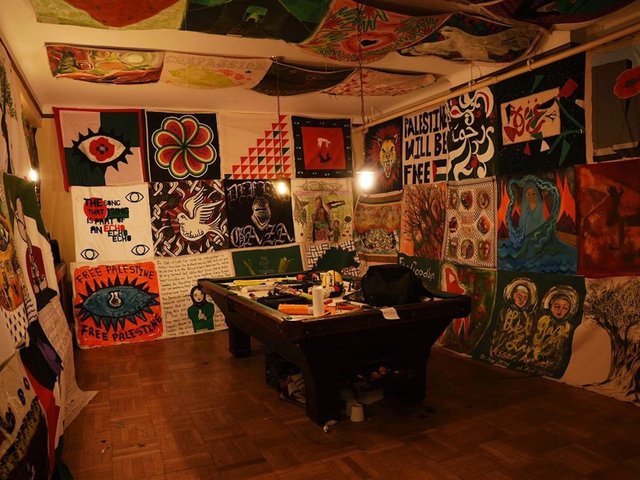An open letter published last month calling for a boycott of Columbia University has since gained nearly 2,000 signatories, including many prominent artists and art historians. The letter is the latest response to the ongoing situation on the university’s campus in Manhattan stemming from student protests related to the war in Gaza. The university’s leaders have faced criticisms from both liberal and conservative corners over their handling of these protests, which have led to the resignations the Ivy League school’s president, Minouche Shafik, and her interim successor Katrina Armstrong.
The letter’s release followed Armstrong’s resignation and the university’s decision to comply with demands made by US President Donald Trump’s administration in hopes of having $400m in federal funding restored. The administration had threatened to withhold the funding over what it described as Columbia’s failure to protect students and faculty from “antisemitic violence and harassment”.
The letter condemns what it describes as an “authoritarian assault on universities” designed to “destroy their role as sites of teaching, research, learning and activism essential to building a free and fair world”. As part of the boycott, signatories have pledged not to participate in academic or cultural events at Columbia or its affiliate Barnard College, including lectures, conferences and collaborations with faculty or administrators.
“I signed onto the Columbia boycott in solidarity with students, faculty and staff at Columbia who—as elsewhere in this country—have been unjustly targeted for protesting or otherwise speaking out against the genocide in Gaza,” says Sarah Gilbert, an associate professor of sculpture at Pitzer College in Claremont, California. “We cannot normalise our students being stalked and abducted by [Immigration and Customs Enforcement] on their walk home to university housing, or our students being forced to flee the country after the university summarily disenrolls them in collusion with our increasingly fascist federal government.”
Signatories of the letter represent around 30 institutions around the US and abroad, and include artists and art historians at institutions such as California College of the Arts, the University of California campuses in Los Angeles and Santa Cruz, Rutgers University in New Jersey, Virginia Commonwealth University, the University of Rochester, Bard College, Pratt Institute, the School of Visual Arts, The New School, New York University, Columbia itself and the University of Illinois in Chicago.
“If there were any meaningful instances of antisemitism on any campus we would all know about them,” says Blake Stimson, an art history professor at the University of Illinois, Chicago. “Instead, all we hear about is antisemitism in the abstract. In the meantime, very particular children, students, women, professors, doctors, reporters, hospitals, churches, mosques and universities are being annihilated in the name of our bureaucrats' new [diversity, equity and inclusion] protecting the Israeli state. Boycotting Columbia is the least we can do.”
In MarchMahmoud Khalil, a recent Columbia graduate and pro-Palestinian activist, was unlawfully detained by ICE agents, sparking further controversy over the circumstances of his arrest and federal authorities’ attempts to deport him. Less than a week later, another student was detained on campus. Columbia has become the first target in what many view as a co-ordinated campaign against higher education institutions and campus freedom of expression, efforts that have since expanded to schools including the Rhode Island School of Design, Brown University and the University of Pennsylvania.
“I signed the letter boycotting Columbia University in solidarity with the students, faculty and staff who are being punished, arrested and deported for speaking out against US-backed Israel’s genocide in Gaza, Zionist settler colonialism and apartheid, and for supporting Palestinian liberation,” says T.J. Demos, an art history professor at UC Santa Cruz and the founding director of the Center for Creative Ecologies. “Their courage deserves protection, not repression.”
Demos, who received his PhD from Columbia, adds: “While student and faculty protests have occurred throughout Columbia’s history, what sets this moment apart is the scale and urgency of the ongoing genocide in Gaza—and the unprecedented repression deployed to silence opposition. The administration, in league with the right-wing US government and extremist pro-Zionist orgs, has weaponised antisemitism, falsely conflating criticism of Israel with racism and equating anti-Zionism with antisemitism, to smear and target dissenting voices.”
Columbia was at the centre of the protest movement that swept universities in the US and abroad in the spring of 2024, with student activists setting up a large encampment on its Manhattan campus and taking over a building. Ultimately, the NYPD swept the campus, clearing the encampment and raiding the occupied building, arresting around 300 students in the process.
In addition to having one of the highest-ranked university art programmes in the US, Columbia is also home to the Wallach Art Gallery, known for mounting ambitious and rigorous exhibitions.


